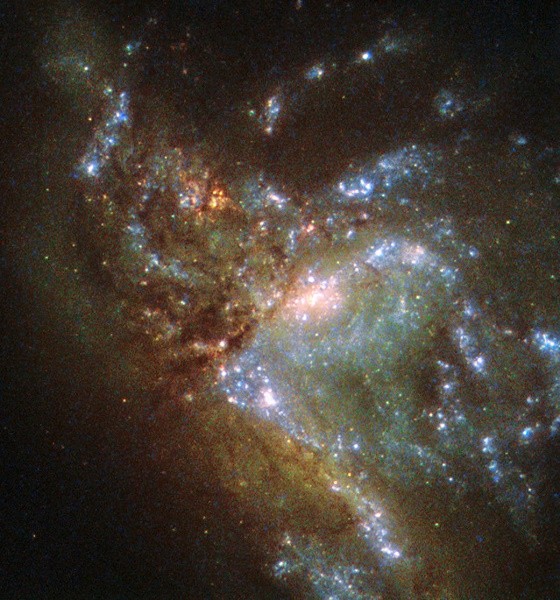The Hubble Space Telescope captured an image of a colossal merger of two galaxies, where the two are seen overlapping and enshrouding each other within a swathe of cosmic dust, and interstellar material.
Using its Wide Field Planetary Camera 2 (WFPC2), the space telescope which is maintained both by NASA and the European Space Agency, captured this stunning image of galaxy NGC 6052 located some 230 million light years away in the constellation Hercules.
The NGC 6052 appears to be an "abnormal" galaxy, unlike spiral galaxies such as our own and the Andromeda, this one resulted from an intergalactic collision, forming a single morphing galactic mess.
According to ESA scientists, this is an entirely "new" galaxy forming, where two separate galaxies eventually gravitated towards one another due to gravitational forces and then ultimately collided. This image now depicts the two galaxies merging into one single structure.
In the image, some individual stars are thrown off and misplaced from their original orbits, where they are now in completely new stellar paths that are now far from the actual galactic collision, throwing them off course. This activity can emit intense and powerful light energies, that caused this merger to possess a rather irregular, chaotic shape.
Scientists believe that this galaxy will eventually form a more stable shape, that may no longer resemble the shape of the two separate galaxies.
The incredible technology of Hubble's WFPC2 camera can record images using 48 color filters that span the spectrum of far ultraviolet to visible light to near infrared wavelengths. The center of the telescope houses an L-shaped trio of wide field sensors along with a smaller, high resolution camera that is positioned in the last square of these L shaped sensors.



























